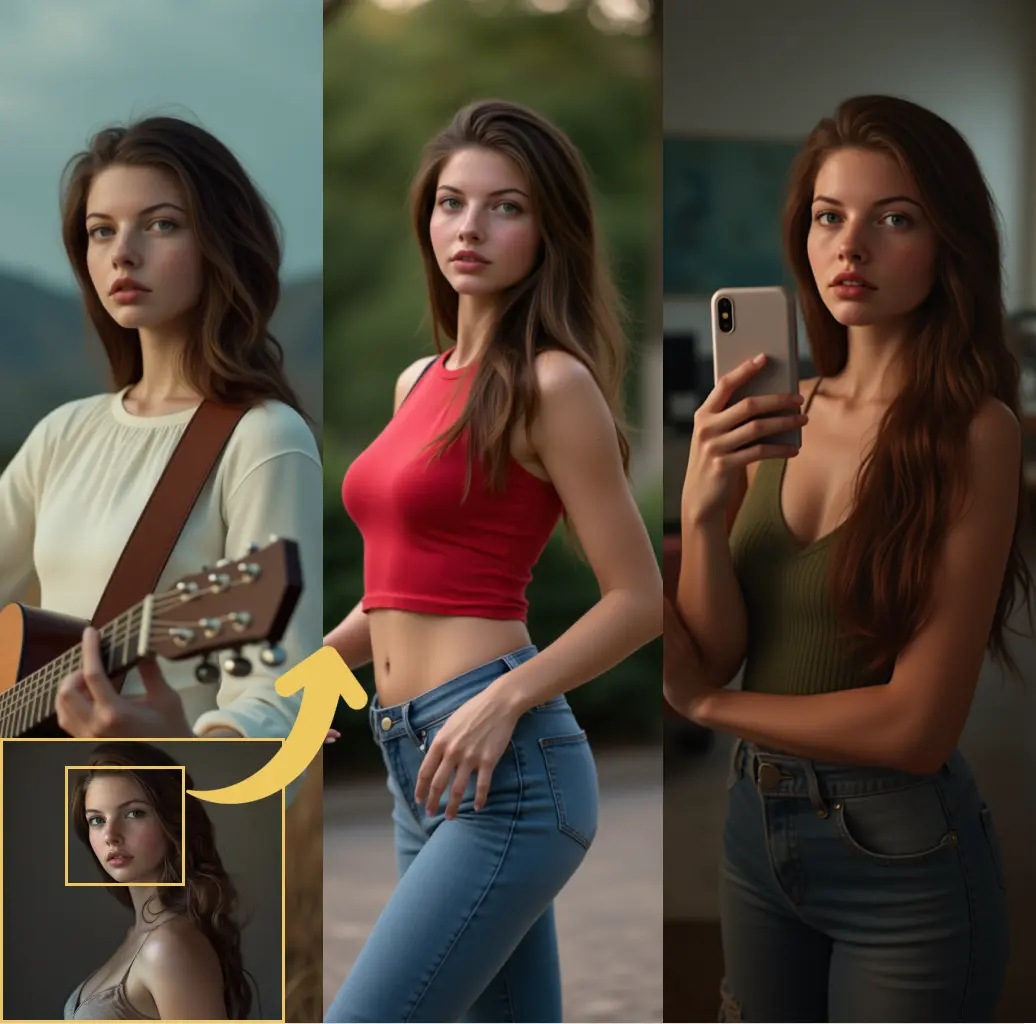ComfyUI Node: CLIP Text Encode (Advanced)
BNK_CLIPTextEncodeAdvanced
Categoryconditioning/advanced
BlenderNeko (Account age: 762days) Extension
Advanced CLIP Text Encode Latest Updated
2024-08-07 Github Stars
0.36K
How to Install Advanced CLIP Text Encode
Install this extension via the ComfyUI Manager by searching for Advanced CLIP Text Encode- 1. Click the Manager button in the main menu
- 2. Select Custom Nodes Manager button
- 3. Enter Advanced CLIP Text Encode in the search bar
Visit ComfyUI Online for ready-to-use ComfyUI environment
- Free trial available
- 16GB VRAM to 80GB VRAM GPU machines
- 400+ preloaded models/nodes
- Freedom to upload custom models/nodes
- 200+ ready-to-run workflows
- 100% private workspace with up to 200GB storage
- Dedicated Support
CLIP Text Encode (Advanced) Description
Advanced text encoding node for AI art generation with precise embeddings and nuanced control.
CLIP Text Encode (Advanced):
The BNK_CLIPTextEncodeAdvanced node is designed to provide advanced text encoding capabilities using the CLIP model. This node allows you to input text and obtain high-quality embeddings that can be used for various conditioning tasks in AI art generation. By leveraging advanced token normalization and weight interpretation techniques, this node ensures that the text embeddings are finely tuned and balanced, providing more control over the generated outputs. The node is particularly useful for artists looking to incorporate nuanced textual descriptions into their AI models, enhancing the creative possibilities and precision of their work.
CLIP Text Encode (Advanced) Input Parameters:
text
This parameter accepts a string input, which can be multiline, representing the text you want to encode. The text is tokenized and processed to generate embeddings. The quality and relevance of the text input directly impact the resulting embeddings and, consequently, the conditioning of the AI model.
clip
This parameter requires a CLIP model instance. The CLIP model is used to tokenize and encode the input text, generating the embeddings that will be used for conditioning. Ensure that the CLIP model is properly loaded and compatible with the node.
token_normalization
This parameter offers several options for normalizing the tokens: none, mean, length, and length+mean. Token normalization helps in adjusting the weights of the tokens to ensure balanced embeddings. For example, mean normalization adjusts the token weights to have a mean value, while length normalization adjusts based on the length of the tokens. The default value is none.
weight_interpretation
This parameter provides different methods for interpreting the weights of the tokens: comfy, A1111, compel, comfy++, and down_weight. Each method offers a unique way of handling token weights, affecting the final embeddings. For instance, comfy might provide a balanced interpretation, while down_weight could reduce the influence of certain tokens. Choose the method that best suits your artistic needs.
affect_pooled
This optional parameter can be set to disable or enable. When enabled, it applies the token normalization and weight interpretation to the pooled output as well. This can be useful if you want the pooled output to reflect the same adjustments as the individual token embeddings. The default value is disable.
CLIP Text Encode (Advanced) Output Parameters:
CONDITIONING
The output of this node is a tuple containing the final embeddings and a dictionary with the pooled output. The embeddings are used for conditioning the AI model, providing it with the encoded textual information. The pooled output is an aggregated representation of the embeddings, which can be useful for certain types of conditioning tasks.
CLIP Text Encode (Advanced) Usage Tips:
- Experiment with different
token_normalizationandweight_interpretationsettings to find the best configuration for your specific text input and artistic goals. - Use the
affect_pooledparameter if you need the pooled output to reflect the same adjustments as the individual token embeddings. - Ensure that your CLIP model is properly loaded and compatible with the node to avoid any encoding issues.
CLIP Text Encode (Advanced) Common Errors and Solutions:
Invalid CLIP model instance
- Explanation: The provided CLIP model instance is not valid or not properly loaded.
- Solution: Verify that the CLIP model is correctly loaded and compatible with the node.
Text input is empty
- Explanation: The text input parameter is empty or not provided.
- Solution: Ensure that you provide a valid text input for encoding.
Unsupported token normalization method
- Explanation: The selected token normalization method is not supported.
- Solution: Choose a valid token normalization method from the available options:
none,mean,length,length+mean.
Unsupported weight interpretation method
- Explanation: The selected weight interpretation method is not supported.
- Solution: Choose a valid weight interpretation method from the available options:
comfy,A1111,compel,comfy++,down_weight.
CLIP Text Encode (Advanced) Related Nodes
RunComfy is the premier ComfyUI platform, offering ComfyUI online environment and services, along with ComfyUI workflows featuring stunning visuals. RunComfy also provides AI Playground, enabling artists to harness the latest AI tools to create incredible art.




